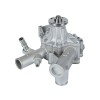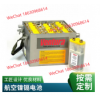It is extremely important to understand the different methods that can be used to pay for the goods between the exporter and the importer. These will always be subject to negotiation between the two parties and need to be determined at the beginning of the process. The most commonly used methods of payment are:
Cash in Advance
In this situation the importer needs to remit the funds to the importer prior to shipment. This is the most risky method of payment for importers because funds have passed hands before the goods are even shipped. When using experienced negotiators in this area, in many occasions payment terms of 50% up front and 50% on final inspection of the goods can be a safer and better option.
Letter of Credit
Is where a chosen bank, on behalf of the importer, pays the exporter through the exporters corresponding bank overseas an amount of money provided the certain terms and conditions are met. Letters of credit can be for a predetermined future date or they can be drawn at sight. Irrevocable letters of credit cannot be cancelled or amended without the consent of both parties to the agreement.
This method of payment is safer for the importer because payment is not exchanged until certain terms and conditions are met. However this can be a costly payment method.
Sight Draft
In this case all shipping documents including the invoice and the document of title are delivered by the exporter to his/her bank under the cover of a Bill of Exchange which is drawn at sight. The exporter’s bank then transfers them to the importers bank. The importer’s bank will then surrender these documents to the importer once the importer pays the face value of the Bill of Exchange. The funds are then received by the exporter’s bank and transferred to the exporter.
This method is usually more favourable than a letter of credit as it does not have to be drafted by a bank.
Term Draft
Is very similar to a Sight Draft but the Bill of Exchange is to be paid at a predetermined future date. The documents are given to the importer against an undertaking that they will pay when the bill matures. Along with the benefits of a Sight Draft, a Term Draft has the added benefit of a period of credit between receiving the documents and transferring funds at a future date.
Open Account (Credit)
After the goods have been produced and despatched, the exporter sends the documents to the importer who then makes payment. This is the most beneficial method for the importer as they will receive the goods before having to make payment, which allows them to use the funds on other things in the mean time.






